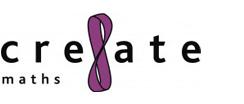Key Ideas - Chapter 7: Reasoning about uncertainty
A list of resources to support the book and website "Key Ideas in the Teaching of Mathematics"
Chancemaker
ChanceMaker is a microworld programme developed by Dave Pratt and freely available to download.
It is designed to investigate the ideas that 11- and 12-year-olds have about chance. Children are presented with a series of gadgets, simulations of everyday random generators such as coins, spinners and dice. They are told that the gadgets are being programmed and asked which ones they consider not to be working properly. Later, they are challenged to mend the gadgets they consider not to be working.
Children do not necessarily recognise the importance of running a large number of trials to make such judgements. Neither do they always appreciate the significance of the role of the distribution, referred to here as the workings of the gadget.
Because feedback is available through the computer-based tools in many forms, and because the children are able to test out personal conjectures, they often begin to construct situated notions of the Law of Large Numbers and the connection between probability and data distributions.
Probability and Statistics
Probability and statistics, from the Nuffield Mathematics Project, starts with play activities which can develop ideas of fairness and probability through discussions on common facts leading to the collection of data, illustrating it with graphs and charts and drawing conclusions.
Experimental and theoretical probability are dealt with through a variety of games and situations. Sampling, random numbers, grouped frequency and histograms each merit a chapter.
The relevant section is Games leading to ideas on probability on pages 16-25.
The games include: (i) ‘Galton’s Quincunx’, in which ball-bearings can be dropped through a maze of pins, resulting in a distribution based on Pascal’s triangle; and (ii) throwing a single die or a pair of dice with various numbers of sides.
The resource includes a case study. Other possible games are mentioned on page 26.
Using Probability Computer Games S3
In this resource from the DfE Standards Unit, students confront and overcome common misconceptions about probability, count equally likely outcomes using diagrams, discuss relationships between theoretical probabilities, observed outcomes and sample sizes and calculate probabilities of dependent and independent events.
The resource describes how children might explore a range of probabilistic ideas based around the computer games. In particular the tasks seek to ‘confront and overcome’ common misconceptions. Although we would challenge the notion that misconceptions can easily be overcome, there is no doubt that students need to be aware that their ideas do not always explain behaviour of phenomena as a precursor to their seeking resolutions.
The games require counting equally likely outcomes, thinking about the relationship between theoretical and data distributions, including the crucial role of sample size in that relationship, and the calculation of probabilities of dependent and independent events.
Evaluating Probability Statements S2
In this resource from the DfE Standards Unit, students discuss and clarify some common misconceptions about probability. This involves discussing the concepts of equally likely events, randomness and sample sizes.
The suggested tasks are based around a set of cards, to which the response might be ‘true’, ‘false’ or ‘unsure’. The commentary explains why the questions have been asked. For example, one card proposes that 1, 2, 3, 4, 5, and 6 are less likely to appear in the lottery than 3, 12, 26, 37, 44 and 45. The commentary argues that people often regard ‘special’ numbers in a different way from ‘ordinary’ numbers, when considering their probability.
In the research literature, Kahneman and Tversky’s heuristics on people’s judgements of chance offer one account of this phenomenon.
The aim is to reveal some common misconceptions. It is not clear that revealing such issues is sufficient, and students may not believe the explanations as to why some responses are wrong. Nevertheless, the tasks might provide some useful groundwork that can be followed up in other ways.
Design a Board Game
In this Shell Centre module, groups carefully design and produce their own board games. These games are then played and evaluated by other class members.
This involves developing ideas from 2-dimensional shape-and-space, together with basic concepts of probability. Students play a number of games which have been devised by someone else, discover faults and shortcomings and suggest improvements.
Students share their ideas within groups, then decide on a rough plan for their own game. Each group of students produces a detailed design, makes it, and checks the finished version. The groups exchange games and test them. When they are returned, each group re-assesses its own game in the light of another group's comments
Which Spinners?
This NRICH maths activity is intended for students who are already familiar with sample space diagrams.
A flash simulation makes it possible to create the throwing of one, two (or more) spinners of various sizes. The relative frequency of the sum of the spinners (and the difference in the case of two spinners) can be explored by throwing the spinners as many times as desired. The problem statement challenges the student to try to predict what the relative frequency chart will look like when it settles down.
A second task challenges the student to identify the spinners for some given relative frequency diagrams.
How Risky is Life?
In this Bowland Maths task, students engage in a series of tasks that will help recognise the extent to which the media affects their assessment of the probabilities of dying in various ways. Students make estimations and then examine real data to see how accurate they were.
It is worth noting that risk is used as a synonym for probability, in contrast to some sources, which would define risk in terms of both likelihood and impact. Since the impact in these situations is consistently death, there is little problem in comparing the situations according to likelihood alone.
Rabbits
In this Cre8ate maths activity students learn that a simulation is a model of a real situation. Data for the birth rate of rabbits is provided and is used by students to develop their own model to simulate the breeding of rabbits in a field and consider the likely damage to the farmer’s crop. Initially this is done as a recording process, using an existing example and template, which requires students to process information provided. It offers a good opportunity for group collaboration. An excel spreadsheet allows students to extend the activity and investigate more complex scenarios. They are able to alter the number of years, maximum litter size and the initial number of females of breeding age, as well as adjusting gender bias and the maximum possible monthly death rate
Deborah's Dilemma
This activity is a decision-making scenario programme.
Deborah has a serious back complaint. She could have an operation that could cure the problem, but it might lead to a number of side-effects, some of which are serious. Data are provided about different doctors’ opinions of the likelihood of success and the various side-effects.
A tool allows users to simulate what might happen if Deborah were to choose to have the operation. Users are able to model the situation based on their assessment of the success rate and the liklihood of the significant side effects. In effect, they can examine many possible futures for Deborah given the model they have built. In comparison, they can also build a model of Deborah’s life should she not have the operation. In this model, users choose activities and their consequence in terms of the pain that Deborah might suffer. It is then possible to consider the effect of pain on her quality of life.
Users are invited to consider how they might respond in Deborah’s situation. Would they have the operation? The critical idea is that likelihoods need somehow to be aligned with impacts, but that such a judgement is personal, involving values that extend into many dimensions of Deborah’s life.





